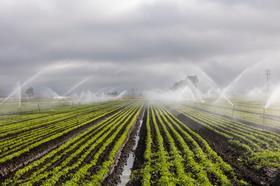
Water is a topic of growing concern around the world, and that concern is driven by rising demand for water among communities, industry, and agriculture, in combination with the impact of climate change already felt.
At 10am on 5 April, as part of the Fresh Produce Forum programme at Fruit Logistica in Berlin, I will introduce the Sustainability Initiative Fruit and Vegetables (SIFAV) and its approach and ambitions on water sustainability.
Our global procurement of fruit and vegetables has a considerable impact on local water use in producing regions. This makes water a priority topic for our sector, one that needs to be acted on to realise a more sustainable fresh produce industry.
But how can retailers and importers create positive impact? Within SIFAV and with the help of expert partners, we’ve developed a credible and feasible collaborative approach, tailored to the position of the SIFAV partners as global fresh produce buyers for the European consumer market. That approach entails the following:
—In all sourcing regions with high water risk: contribute to optimising on-farm water management by working with suppliers to implement Good Water Management Standards – to at least 70 per cent of sourced volume by 2025; this is a typical first step of a credible water stewardship response.
—In three priority sourcing areas: engage more deeply and collaboratively with the aim to positively contribute to resilience and sustainability at catchment level. This deeper involvement will provide valuable insights for SIFAV and its partners about the effectiveness of different approaches that can be scaled up across sourcing areas around the globe.
Benchmarked standards
To support SIFAV partners and their suppliers, a basket of approved water standards has been developed. Through benchmarking, SIFAV aims to promote transparency and comparability, drive harmonisation, and support the alignment of market requirements based on best practice.
The different standards that meet the benchmark are accepted in the approved ‘basket of standards’. This provides choice, which helps to increase efficiency, reduces audit duplications and costs for producers, and offers a flexible pathway towards stronger performance.
The standards within the basket vary in their depth and focus of coverage of water issues. This enables farmers to select a standard that adequately matches their capacity, and that best addresses the specific situation and challenges in their farm and catchment.
The joint adoption of this basket of water standards is a credible starting point to improve shared water challenges in high water risk regions together.
Three priority catchments
Building on common ground established through this basket of standards, SIFAV has already initiated next steps and is in the process of selecting three priority water catchments in Spain, Peru, and South Africa.
Its partners aim to work with producers in these catchments to measure and optimise their water use efficiency, to gain insight into the catchment risks and opportunities, and ultimately to explore how to contribute to the resilience and sustainability of the catchment area – in other words, move towards the end destination of basin water security.

Together is better
We encourage a collaborative approach to drive sustainable change not just on water risks but on topics such as climate change, food loss, living wage, transparency, and due diligence. Under the SIFAV umbrella, more than 40 prominent sector partners have joined forces to improve the sustainability of fruit and vegetable supply chains across the globe.
These partners scale up their sustainable engagement by joining forces with like-minded players within the fruit and vegetable sector. SIFAV drives collaborative action by creating a level playing field through joint targets and by developing credible tools, policies and approaches. This helps the partners to drive sustainability in their own supply chains.
The focus of SIFAV’s 2025 strategy is on reducing the environmental footprint across the supply chain, improving working conditions, working towards living wages and incomes – check out our IDH roadmap on Living Wages online – and strengthening due diligence reporting and transparency.
The joint objectives include a collective action plan that supports UN Sustainable Development Goals and the EU Farm to Fork Strategy to accelerate the transition to a fair, healthy and environmentally friendly food system.
Since the SIFAV 2025 strategy was launched in 2021, the number of partners has been growing considerably and good progress has been made.
For example: a carbon footprint calculation tool has been developed, a basket of social standards for verifying working conditions at large farms and smallholders in high-risk and medium risk countries has been defined and all partners are currently going through specifically developed due diligence training on implementing the OECD guidelines in the fresh produce industry.
I look forward to explaining our approach and next steps during my talk in Berlin, and I hope to inspire similar action from more fresh produce companies on this critical topic.
About SIFAV
SIFAV aims to contribute actively to more sustainable global fresh fruit and vegetable supply chains. Its purpose is to create impact at scale by aligning policies, targets, and collaborative action. SIFAV is a pan-European project coordinated by IDH, the Sustainable Trade Initiative, and represents more than 40 partners – among them leading European food retailers, prominent brands and traders, civil society organisations and other supporting parties.



